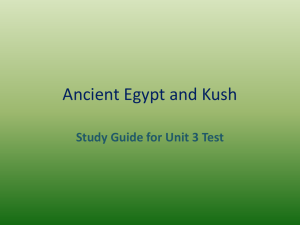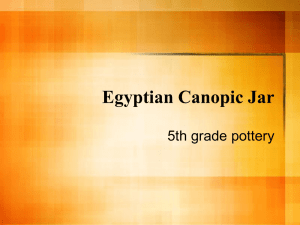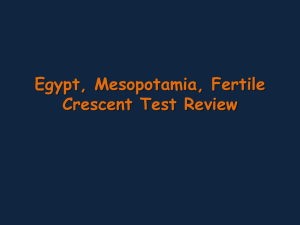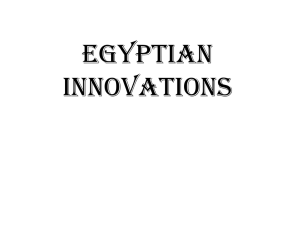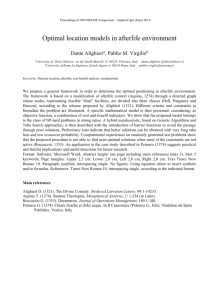Afterlife Checklist
advertisement
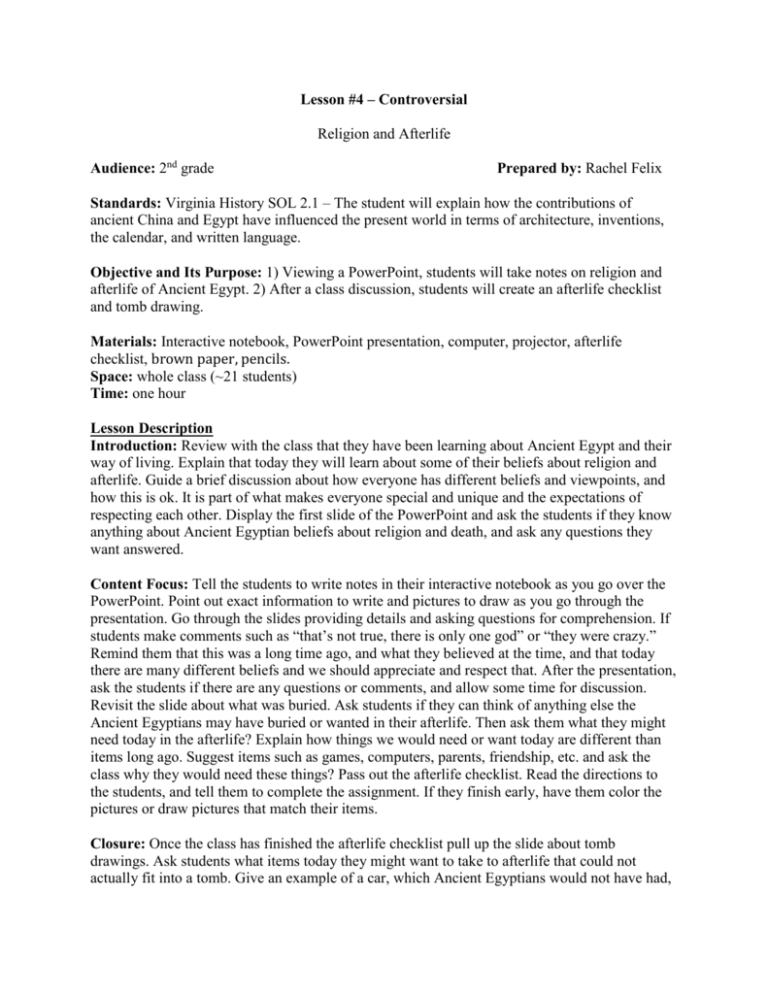
Lesson #4 – Controversial Religion and Afterlife Audience: 2nd grade Prepared by: Rachel Felix Standards: Virginia History SOL 2.1 – The student will explain how the contributions of ancient China and Egypt have influenced the present world in terms of architecture, inventions, the calendar, and written language. Objective and Its Purpose: 1) Viewing a PowerPoint, students will take notes on religion and afterlife of Ancient Egypt. 2) After a class discussion, students will create an afterlife checklist and tomb drawing. Materials: Interactive notebook, PowerPoint presentation, computer, projector, afterlife checklist, brown paper, pencils. Space: whole class (~21 students) Time: one hour Lesson Description Introduction: Review with the class that they have been learning about Ancient Egypt and their way of living. Explain that today they will learn about some of their beliefs about religion and afterlife. Guide a brief discussion about how everyone has different beliefs and viewpoints, and how this is ok. It is part of what makes everyone special and unique and the expectations of respecting each other. Display the first slide of the PowerPoint and ask the students if they know anything about Ancient Egyptian beliefs about religion and death, and ask any questions they want answered. Content Focus: Tell the students to write notes in their interactive notebook as you go over the PowerPoint. Point out exact information to write and pictures to draw as you go through the presentation. Go through the slides providing details and asking questions for comprehension. If students make comments such as “that’s not true, there is only one god” or “they were crazy.” Remind them that this was a long time ago, and what they believed at the time, and that today there are many different beliefs and we should appreciate and respect that. After the presentation, ask the students if there are any questions or comments, and allow some time for discussion. Revisit the slide about what was buried. Ask students if they can think of anything else the Ancient Egyptians may have buried or wanted in their afterlife. Then ask them what they might need today in the afterlife? Explain how things we would need or want today are different than items long ago. Suggest items such as games, computers, parents, friendship, etc. and ask the class why they would need these things? Pass out the afterlife checklist. Read the directions to the students, and tell them to complete the assignment. If they finish early, have them color the pictures or draw pictures that match their items. Closure: Once the class has finished the afterlife checklist pull up the slide about tomb drawings. Ask students what items today they might want to take to afterlife that could not actually fit into a tomb. Give an example of a car, which Ancient Egyptians would not have had, but is needed today. Explain to students that they will work in pairs to create their own tomb drawings. Explain that they will get a large piece of brown paper, and that they will collaborate to think of at least two important items to draw. Tell them the expectations are to equally contribute, try their best to draw neatly, and have a reason for their items. Pass out the paper and tell students to begin. As they finish tell them to turn the paper over and write what they drew and why it is important. If time allows, have students show the class their drawings and explain what it is. Tell the class their drawing will be hung on the wall, like they would in a tomb, but they will get to take it home in a few weeks. Evaluation Formative: Observed students’ participation during discussion and staying on task while taking notes and working on afterlife checklist and drawing. Summative: Students’ afterlife checklist and drawing will be collected for completion and identification of important items. Background Information/Content: Religion in Ancient Egypt was extremely important, and the center of everyday life. It is different from the beliefs of many Americans, making it difficult to understand and appreciate completely (Brewer & Teeter, 2002). Ancient Egyptians believed in many gods and goddesses, also known as deities, which took many different forms and changed often. These deities represented all aspects of Egyptian culture such as, astronomy, medicine, geography, agriculture, art, law, and more (Brewer & Teeter, 2002). Religious beliefs are different across cultures and around the world, and have also changed overtime, so some information about Ancient Egyptian beliefs are based only on modern research causing some unclear interpretations (Brewer & Teeter, 2002). Two gods were considered kings, Osiris and Horus, and were treated extra special (Brewer & Teeter, 2002). Pharaohs were also considered gods, and each had temples build for them (About Religion, 2003). Understanding the beliefs of Ancient Egypt may be challenging for some people because it is different than ours, but it helps us learn to respect different cultural beliefs. Afterlife was another belief of the Ancient Egyptians, and also a major part of their religion and daily life. They looked forward to death because they believed their afterlife would be even better. However, they were not automatically granted a good afterlife, they had to earn it by being good while they were alive (Donn, 2014). Tombs were the place of burial in Ancient Egypt. They were large because Egyptians were buried with all of the items that were important to them, and wanted to have available for their afterlife (Carr, 2014). When someone died, their body was preserved for afterlife through the mummification process, and during this time, tombs were made and their treasures were places inside. Items of need or importance were included, such as furniture, clothes, knives, spoons, food, jewelry, and more (Carr, 2014). Sometimes, however, certain items would not fit in the tomb, or not able to be buried, so drawings and carvings were made on the tomb walls. These were considered to be just as good, and made them available for afterlife (Carr, 2014). This is again something not common in the American culture, but is exciting to learn about and helps us better understand the Ancient Egyptian culture and beliefs. Bibliography About religion. (2003). EMC 3706, Ancient Egypt. Evan-Moor Corp. Afterlife Checklist. Theme series – Egypt. Creative Teaching Press. Carr, K. (2014). Egyptian afterlife project. Portland State University. Retrieved from http://www.historyforkids.org/crafts/egypt/afterlife.htm Donn, L. (2014). Ancient Egypt for kids the afterlife. Retrieved from http://egypt.mrdonn.org/afterlife.html Egypt Past. Ancient Egyptian beliefs in the afterlife; Life after death. Retrieved from http://www.egyptpast.com/gods/afterlife.html Brewer, D. J. & Teeter, E. (2002). Religion in the lives of the ancient Egyptians. The University of Chicago. Retrieved from http://fathom.lib.uchicago.edu/1/777777190168/ Afterlife Checklist Name:__________________ What would you need in the afterlife? List at least 10 things, and explain how each item would help you in the afterlife. You may also choose intangible items like love or friendship. Items I would need Why I would need this item
